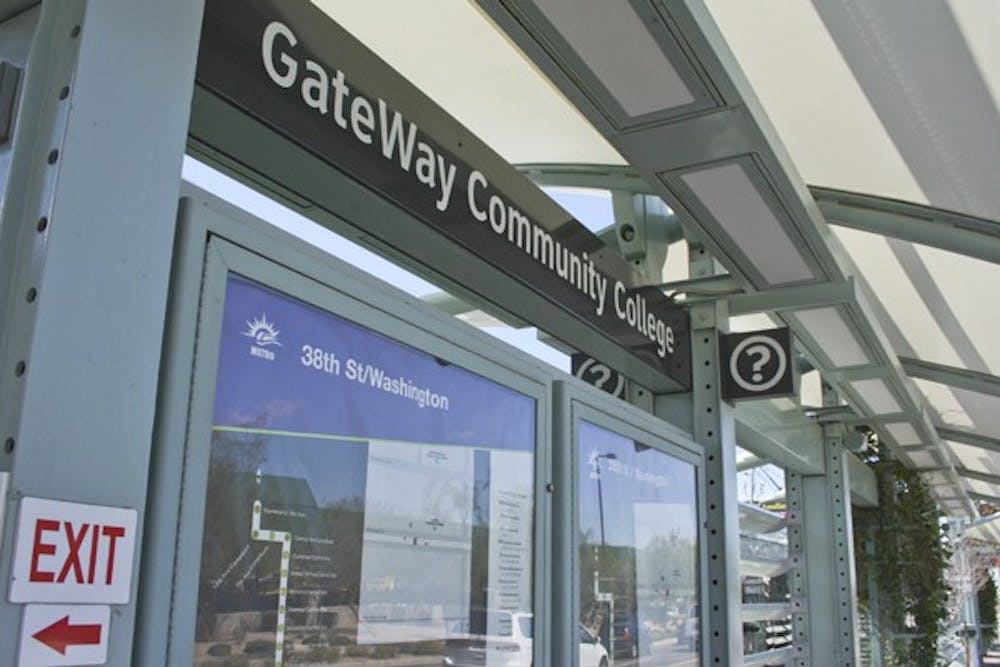With a fragile economy, many people are turning to lower cost education options, such as Gateway Community College. A direct link to the Metro Light Rail at the 38th and Washington streets stop gives students and commuters convenient access to the school.
Enrollment in the Maricopa Community College system has increased from 120,096 in 2008 to 141,704 in 2010, according to the district’s records. The largest increase in the past decade occurred between 2008 and 2009, when enrollment jumped by 11,488 during the peak of the recession.
Enrollment at ASU has increased to 70,440 in 2010 from 68,064 in 2009.
An important factor in community college enrollment is the economy, said Sonia Filan, the Mesa Community College director of institutional advancement.
“We tend to have an increase in enrollment when the economy is weak,” Filan said.
Enrollment at Gateway has seen roughly a 15 percent increase since last year, according Bonnie Welsh, an administrator in academic affairs at the college.
Gateway student Melissa Henry will be graduating with her associate of arts in May, and said choosing community college before ASU has given her a wealth of opportunities for a cheaper price.
“It gave me a chance to get my feet wet on a college campus and get involved with college activities on a smaller scale before I got to the university,” she said.
Henry said she has taken full advantage of the “close-knit community” at Gateway. She took part in a study abroad program in Prague, will travel with the school to Washington D.C and stays involved through campus activities.
According to the college’s website, in-state tuition at Gateway is currently $71 per credit hour.
In-state tuition at ASU is currently $557 per credit hour, according to the University’s website.
“I think community college is very affordable,” said Paula Norby, vice president of academic affairs at Gateway Community College. “I think that makes a big difference for students. It’s more accessible and we have great faculty.”
The faculty to student ratio is another aspect that attracts students to community college, she said. The typical introductory psychology course only has 25 students, while university class sizes are usually in the hundreds.
“We have about 7,500 students,” she said. “Students have more opportunity to get involved.”
Julie Newberg, an ASU spokeswoman, said students who pay tuition at the University are often actually paying less than students in the community college system.
“We have very generous financial aid,” Newberg said in an e-mail. “Indeed over 40 percent of our students pay no tuition, much lower than the community colleges.”
Newberg said there is a difference in what students will find in a university, as opposed to a community college.
“We do research and teach the process of discovery so that students realize knowledge is never-ending,” she said.
The tuition ASU students pay goes toward faculty salaries, computers, TAs and the library, Newberg said.
“Over half of the cost of these items is paid by tuition, as the state does not give us enough money to cover [them],” she said.
Reach the reporter at ktenagli@asu.edu





